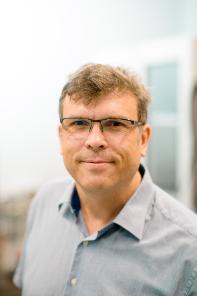TeraApps Supervisors
This project could not be possible without the efforts and tutoring of the following supervisors that ensure that our ESR's are on the right track to develop their carrears and build up knowledge.
Dr Edward Wasige (Coordinator)
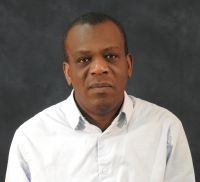 Dr Edward Wasige (Coordinator)
Dr Edward Wasige (Coordinator)
Senior lecturer
Edward Wasige leads the High Frequency Electronics (HFE) Group, Division of Electronics and Nanoscale Engineering, School of Engineering, University of Glasgow. He holds a First Class Honours BSc (Eng.) degree in Electrical Engineering from the University of Nairobi (1988, Kenya), an MSc in Microelectronics and Telecommunications from the University of Liverpool (1990, UK), and a PhD (with Distinction) in Electrical Engineering from Kassel University (1999, Germany) for developing a quasi-monolithic integration technology for microwave and millimetre-wave circuits. III-V active devices (GaAs FETs) were embedded in high resistivity Si substrates to realise low cost high performance circuits.
Prior to joining the University of Glasgow in 2002, he held a UNESCO postdoctoral fellowship at The Technion (Israel) where he worked on resonant tunneling diode (RTD) oscillators, experimental modelling of heterojunction bipolar transistors (HBTs) and processing of gallium nitride (GaN) high electron mobility transistors (HEMTs). His current research covers compound semiconductor electronics, with focus on GaN device technologies for power electronics and for microwave electronics, and on indium phosphide (InP) based device and integrated circuit (IC) technologies for microwave, mm-wave and terahertz (THz) electronics.
Professor David Cumming
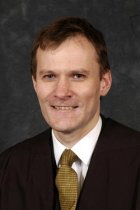 Professor David Cumming
Professor David Cumming
Head of School / Chair of Electronic Systems (Electronic and Nanoscale Engineering)
David Cumming is the Professor of Electronic Systems at the University of Glasgow. He completed his B.Eng in EEE at Glasgow University in 1989 and his Ph.D. in microelectronics at Cambridge University in 1993. He subsequently worked as a VLSI design engineer with ST Microelectronics in Bristol, UK, and carried out post-doctoral research at Glasgow University. He was a lecturer at the University of Canterbury, NZ, and has been at Glasgow University since 1999 where he is now the Head of the School of Engineering. His research interests are focused on semiconductor devices and microsystems for sensing applications. He has published over 300 papers on sensor and photonic technologies, mainly with an emphasis on integration of technologies. He was a founder of medical diagnostics company Mode DX and his research on CMOS ion sensor arrays enabled the development of the Ion Torrent gene sequencing system. He has held 1851 and EPSRC research fellowships, a Chinese Academy of Science Distinguished Fellowship, a Royal Society Wolfson Merit Award, and is FIEEE, FRSE, FREng.
Professor Richard Hogg
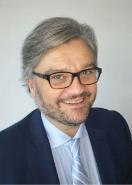 Professor Richard Hogg
Professor Richard Hogg
Professor (Electronic & Nanoscale Engineering)
Professor Richard Hogg received his PhD in semiconductor physics at The University of Sheffield where he employed optical spectroscopy to study a range of novel III-V structures and materials. He was then appointed as a researcher at NTT Basic Research Laboratories (Atsugi, Japan), conducting research on rare-earth doped semiconductors. He then spent a year at The University of Tokyo, Institute for Industrial Science, studying Sb based self-assembled quantum dots. He then worked at Toshiba Cambridge Research Laboratories on a range of III-V semiconductor devices. He subsequently spent three years at Agilent Technologies, Ipswich, which at the time was the highest volume III-V facility in Europe (2000-2003) where he held a senior management role in the manufacture of InP based optical transceiver components. He then joined the University of Sheffield as Senior Lecturer in 2003, and was appointed Professor in 2011. His research group have developed new epitaxial structures, device fabrication technologies and physical understand to engineer novel light sources for a range of applications. These include self-assembled quantum dots for optical communications and biomedical imaging, photonic crystal surface emitting lasers, resonant tunnelling diodes for next generation THz based wireless communications, narrow linewidth lasers (DFBs) for compact atomic clocks, VCSELs for erbium doped waveguide amplifier based photonic integrated circuits, and mid-IR and THz based sources and spectroscopy. In 2015 he moved his group to the James Watt School of Engineering, University of Glasgow where he is Professor of Photonics, and head of The Electronic and Nanoscale Engineering Division.
Prof. Dr. Sven Höfling (Principal Investigator)
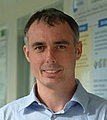 Prof. Dr. Sven Höfling (Principal Investigator)
Prof. Dr. Sven Höfling (Principal Investigator)
Head of Chair
Sven Höfling received his diploma degree in Applied Physics from the University of Applied Science in Coburg and his Ph.D. degree from Würzburg University. He was with the Fraunhofer Institute of Applied Solid-State Physics, Freiburg, Germany from 2001 to 2002 working on blue and white light emitting diodes. In 2003, he joint Würzburg University for his Ph.D. work on single mode emitting GaAs/AlGaAs quantum cascade lasers. From 2006 to 2013, he was head of the Optoelectronic Materials and Devices Group at Technische Physik, Würzburg University. Sven Höfling holds Chairs in Physics at both the University of Würzburg, Germany and the University of St Andrews, United Kingdom. His research interests include the design, fabrication, and characterization of low-dimensional electronic and photonic nanostructures. At Würzburg University, he supervises the work in a 550 m2 clean room facility with a full chain of growth, patterning (including electron beam and optical lithography), processing and characterization tools, which will be important assets within this project.
Prof. Dr. Lukas Worschech
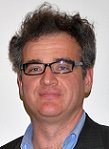 Prof. Dr. Lukas Worschech
Prof. Dr. Lukas Worschech
Head of Service Centre Research and Technology Transfer (SFT)
After studying physics at the University of Würzburg and State University of New York Lukas Worschech received his doctorate degree in Würzburg in 1997 and habilitated in 2002. He built up the nanoelectronic devices group at Technische Physik, Würzburg University. He is author and co-author of more than 200 scientific publications and holds 7 granted patents in the fields of nanoelectronics. Since 2010 he is also heading the service center research and technology transfer at the Würzburg University, providing many services related to technology transfer and third party funding. His research interests include the design, fabrication, and characterization of low-dimensional electronic and optoelectronic nanostructures for high-speed light detection applications and low-power consumption, multifunctional computational purposes.
Prof. Dr. Daniel Erni (Principal Investigator)
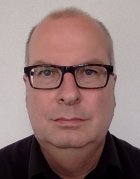 Prof. Dr. Daniel Erni (Principal Investigator)
Prof. Dr. Daniel Erni (Principal Investigator)
Full Professor
Daniel Erni received a diploma degree from the University of Applied Sciences in Rapperswil (HSR) in 1986, and a diploma degree from ETH Zürich in 1990, both in electrical engineering. Since 1990 he has been working at the Laboratory for Electromagnetic Fields and Microwave Electronics, ETH Zürich, where he got his Ph.D. degree in 1996. From 1995-2006 he has been the founder and head of the Communication Photonics Group at ETH Zürich. Since Oct. 2006 he is a full professor for General and Theoretical Electrical Engineering at the University of Duisburg-Essen, Germany. His current research includes nanophotonics, plasmonics, optical antennas, as well as advanced solar cell concepts, optical and electromagnetic metamaterials (e.g. for multi-functional leaky wave antennas and for advanced RF systems for high-field MRI imaging), microwave engineering and THz modeling (e.g. for chipless RFID tags and for THz material and surface characterization), computational electromagnetics, and bioelectromagnetics (e.g. biological tissue modeling).
Professor Nils Weimann
Professor Nils Weimann
Professor
Nils G. Weimann received the Diploma degree in Physics (with Honors) from the University of Stuttgart, Germany, in 1996, and a Ph.D. in Electrical Engineering from Cornell University, Ithaca, NY, USA in 1999. He then joined Lucent Technology’s Bell Labs in Murray Hill, NJ (now Nokia Bell Labs). From 2012 to 2017 he has been with the Ferdinand-Braun-Institute in Berlin, Germany. In 2017 he was appointed chair professor for High Frequency Electronic Components at the University of Duisburg-Essen in Duisburg, Germany. He has authored or co-authored more than 120 publications and conference contributions, and holds 12 patents in the field of high-frequency electronics and integrated optoelectronics. His main research interests are in the area of InP and GaN materials, devices and circuits.
Dr. Weimann received the Young Scientist Award from the 2005 International Symposium of Compound Semiconductors (ISCS). Since 2009 he has served as member of the Electron Device Program Committee of IPRM (International conference on Indium Phosphide and related materials, now part of CSW, Compound semiconductor week).
Dr Werner Prost
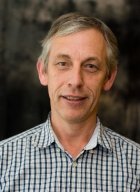 Dr Werner Prost
Dr Werner Prost
Scientist
Werner Prost received PhD degree in electrical engineering from Duisburg University in 1989. He is currently member of Engineering Department of the University Duisburg-Essen. His main interest is to contribute to the development of micro-, nano-, and optoelectronic high-frequency devices by means of advanced heterostructure technology. From 1998-2004 he has coordinated two European Union projects in the “Nano scale Information Device” cluster on tunnelling devices. He contributed to the Collaborative Research Centres 254, 445, and is currently member of the Centre TRR 196 working on mobile THz applications. Werner Prost is member of the “German Crystal Growth Association” (DGKK), and overseas member of the Japanese Institute of Electronics, Information and Communication Engineers. He frequently serves as a reviewer for numerous journals, chair and topical editor of international conferences. He has published more than 110 papers in peer reviewed scientific journals with an ISI citation index h = 20.
Dr José Figueiredo (Principal Investigator)
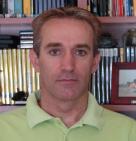 Dr José Figueiredo (Principal Investigator)
Dr José Figueiredo (Principal Investigator)
José Figueiredo has a B.Sc. degree in physics (optics and electronics) and a M.Sc. degree in optoelectronics and lasers, both from the Universidade do Porto, Portugal. As a Ph.D. student he enrolled in a jointly programme between the Universidade do Porto and the University of Glasgow, U.K., to work on the optoelectronic properties of resonant tunnelling diodes. In 2000 he became assistant professor at the Universidade do Algarve (UAlg). In 2017, he joined to the Departamento de Física da Faculdade de Ciências da Universidade de Lisboa. He was co-founder of the start-up Essient Photonics, Glasgow, UK; founder and member of CEOT/UAlg (Centre Electronics, Optoelectronics and Telecommunications); advisor of post-doctoral, doctoral and master researchers, principal investigator and member of national and international projects in the area of Applied Physics, Physical and Electrical Engineering, member of several scientific committees of international meetings and conferences. His research interests includes resonant tunnelling diode based millimetre-wave and terahertz electronic and optoelectronic devices for information processing, radio-over-fiber communication systems, and sensing applications.
Dr Mira Naftaly (Principal Investigator)
Dr Mira Naftaly (Principal Investigator)
Senior Research Scientist
Dr Mira Naftaly is a laser physicist and spectroscopist. She has been working in the area of terahertz since 2001 and is responsible for THz activities at NPL. Her current research interests include: THz metrology, communications, device characterisation, nonlinear generation, and optical material properties.
Dr Xavier Oriols (Principal Investigator)
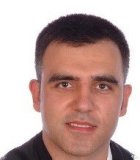 Dr Xavier Oriols (Principal Investigator)
Dr Xavier Oriols (Principal Investigator)
Professor
Dr. Xavier Oriols received his Physics Bachelor in 1993 from the Universitat Autònoma de Barcelona (UAB). During, 1997 he was a researcher at the Institute of Electronics, Microelectronics and Nanotechnology in Lille (France) working on resonant tunnelling devices. He got his PhD degree in Electronic Engineering from the UAB in 1999 with honours. During 2001 and 2002 was a visiting professor at the State University of New York (USA) working on the high frequency simulation of nanoelectronics devices. He is the author or co-author of 2 books and 6 book chapters. He received the award for research excellence in 2009 and 2010. He is associate editor of the Journal of Computational Electronics and Fluctuations and Noise Letters.
His main research activity is devoted to theory and modelling of quantum transport, in general, and of THz frequencies in particular. It combines practical interest in quantum electronic transport, with foundational issues of quantum physics. Dr. Oriols has developed a quantum transport simulator (BITLLES) with an individual treatment of electrons as wave packets, including many-body correlations, decoherence and dissipation.
Professor Luca Varani (Principal Investigator)
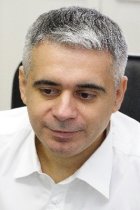 Professor Luca Varani (Principal Investigator)
Professor Luca Varani (Principal Investigator)
Professor
Luca Varani was born in Carpi (Italy) in 1963. He received a PhD in physics from the University of Modena (Italy) in 1993 and a PhD in electronics in 1996 from the University of Montpellier (France). He is now full professor of the University of Montpellier and has been head of the research group TeHO (TeraHertz, High-Frequency and Optics, 14 permanent researchers) of the Institute of Electronics and Systems (IES). His main research activities are in theoretical and experimental transport phenomena with a special attention to the terahertz frequency range. He has been supervisor of 18 PhD thesis, member of the scientific/advisory committees of 6 international conferences and chairman of 3 conferences. He is author/coauthor of about 300 scientific articles in refereed journals and conference proceedings.
Professor Michael Feiginov (Principal Investigator)
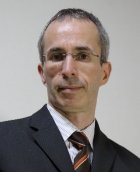 Professor Michael Feiginov (Principal Investigator)
Professor Michael Feiginov (Principal Investigator)
Professor
Michael Feiginov has received M.Sc. degree in physics and electrical engineering from the Moscow Institute of Physics and Technology, Russia in 1994 and Ph.D. in physics of semiconductors from the Institute of Radio-Engineering and Electronics, Russian Academy of Sciences, Moscow, Russia in 1999. In 2001, he has joined the Technical University of Chemnitz, Germany and the same year he was awarded Sofja Kovalevskaja Prize by the Alexander von Humboldt Foundation, Germany. In 2002, he has joined the Technical University of Darmstadt, Germany as Senior Scientist, were he was heading a THz research group for the subsequent 10 years. In 2013, he has moved to Japan, were he was working at the Tokyo Institute of Technology for a year and later he has joined the Frontier Research Centre of Canon Inc., also in Tokyo. In 2016, he was appointed as Professor of high-frequency and THz electronics at the Vienna University of Technology (TU Wien), Austria.
Professor Miriam Vitiello (Principal Investigator)
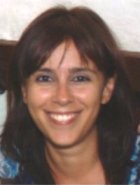 Professor Miriam Vitiello (Principal Investigator)
Professor Miriam Vitiello (Principal Investigator)
Director of Research National Research Council (IT), Professor of Condensed Matter Physics Scuola Normale Superiore (IT)
Miriam Serena Vitiello received the Master degree in Physics (cum laude) in 2001 and the PhD Degree in Physics in 2006 from University of Bari. From 2006 to December 2009 she was a Post-Doctoral Research assistant at the University of Bari. From 2010 to 2017 she was permanent research scientist at the National Research Council; since 2017 she is Director of Research at the CNR Nanoscience Institute (Pisa). She is the recipient of an ERC Consolidator Grant (2016), she is responsible of two European Union FET programs, and local coordinator of 3 National Grants. Her scientific interests concern the design, development and applications of THz quantum cascade lasers; the development of THz nanostructured detectors based on semiconductor nanowires or 2D nanomaterials; far-infrared metrology; graphene-based photonics device; near field THz optics and photonics. Dr. Vitiello is member of the program committee of more than 50 key international conferences in the field of photonic devices. She is co-author of 180 refereed papers on international journals, holds 1 patent and delivered 80 invited talks at international conferences and 30 series of lectures at international universities. For her research activity she was awarded with the Balzan Research Project Grant (2017); the Guido Dorso International Award (2016); the SPIE Early Career Award (2015); the Optoelectronic and photonics prize “Sergio Panizza” of the Italian Physical Society (2012), an International Scientific Author Award (USA, 2005) and 2 National Young Author Awards (2004; 2005).
Dr Michael Dieudonne (Principal Investigator)
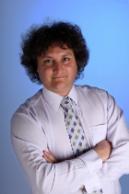 Dr Michael Dieudonne (Principal Investigator)
Dr Michael Dieudonne (Principal Investigator)
Michael is managing a research group in Keysight Laboratories (the corporate research labs) covering different technologies such as Wireless communication, software automation and 5G network test. He coordinated the EC FP7 SAMURAI project and is coordinating the H2020 Triangle project.
Over the years, he did co-author multiple papers in different domains and filed 5 granted patents. He has received his M.Sc. degree from De Nayer in 1999 and his M.BA from Vlerick in 2005.


